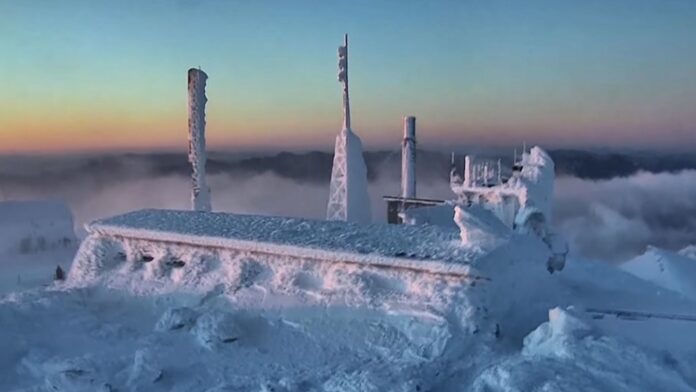Because this will be the last entry in my Hibernal Journal, I thought I would bring this 13-week Journey in my life to a close in a way that is not consistent with how the previous 12 entries have been constructed. If you have been following along since the beginning, you will remember that I have included daily weather conditions, along with sunrise and sunset times, with daily commentary and observations. In the interest of time, I will just share that the Sun continues to rise a few minutes earlier each day, set a few minutes later each day, and that despite her season officially ending on March 19th (this past Thursday), that Winter has not yet left the building.
When me and Alice hit the porch this morning, admittedly later than I had planned for publishing this final entry, we were greeted with 25 mph winds, air temperatures in the mid-20s, and a “feels-like” temperature somewhere south of 10°; not the sort of start to an early Spring day we had in mind. I searched around for Henry David Thoreau (one of several inspirations behind why I set out on this journey), hoping he had offered some insight given his time in the Northeast in the late 1800s, and I was not disappointed. In his “Journal” (18 March 1853), he made this observation: “At the end of winter, there is a season in which we are daily expecting spring, and finally a day when it arrives.” [ don’t worry, I’m not that smart; I Googled his quotes on winter; that’s not cheating; that’s winning.]
Despite the calendar telling us it is now officially spring, it continues to be cold in the morning and warm in the afternoon, and even though it was 60° yesterday, we will not see 60° again until the first week of April. This Is Not Unusual in the Northeast, but now that we have achieved the vernal equinox, it’s time to bring this project to a close.
Observations of the Winter season:
I set out in hopes of falling in love with Winter, thinking that immersing myself – up close and personal, in her environment and on her terms – I would surely appreciate her contribution to the beauty and wonder of the natural world. In many ways, during my time researching what happens beneath the Earth’s surface over the course of the three-plus months she spends draping herself over us with snow and sub-freezing temperatures, I gained a deep and humbled respect for the importance of the winter season.
I learned a few things about worms that don’t completely freeze in winter but burrow deeply below the frost line until the worm Moon tells him it’s time to start heading back to the surface. I learned that a surprising amount of microscopic life likewise hunkers down deep in the ground in varying degrees of stasis until the blood moon makes its call. Trees, interestingly (at least the tallest and oldest of them) drive roots well below the frost line and develop water sacs from which they will start drinking to start activating the buds that will soon enough become leaves. Life above ground also begins to stir as the squirrels and other rodents start getting busy foraging for scraps left behind by Winter’s carnage and chaos. And let us not forget the birds that winter over here, such as the Sparrow, now in competition for food with the waking four-legged furry critters… Did you know their average heart rate is 450 beats a minute?… We locals go nuts when the tourists start pouring in; I can only imagine how the Sparrows feel about it.
Winter’s job, though harsh and unforgiving, may well be the most important of the four seasons. It is up to her to kill off the weak, which sustains the strong so they can survive and reproduce. The byproduct of her work provides water and nutrients to all manner of life up and down the food chain and makes ready the soil for the beginnings of new life that will take place in the season that follows her. Autumn delivers the leaves to her, having evicted them from their trees, and she will freeze these (along with the remaining grasses and plants) so they can break down and decay into the soil for use in future growing seasons… Even the weakest of branches on the trees will not be spared once her harsh and bitter winds and heavy snow free them from their hold on the trees.
The featured image I chose for this last entry, published initially via CNN, was made public on February 3, 2023, from Mount Washington in New Hampshire, when it recorded a wind chill of -108°F, breaking the previous record of -103°F. I have been to the top of that mountain, saw the world-renown weather station that sits up there, and am amazed that people winter over inside that station; I did my fair share of whining about the wind being the worst part of cold temperatures, but only those truly, deeply, and unconditionally in love with Winter could do such a thing as that.
I appreciate the extent to which humans find ways to enjoy winter weather, such as skiing, sledding, skating, and the like. I did some of those things myself in my younger years, but those days are long and well behind me now. I appreciated how much she taught me about the ebb and flow of her work and her capacity for both harshness and tenderness, but there’s no unconditional love in any of that whenever Winter slaps you so hard, all you can do is run back into the house for cover.
I have determined that I do love winter, but I love her a lot more out the window than I do- at least on the coldest and most bitter of windy days- when I’m sitting on the porch with her and Alice and Emma when she’s not howling at us at 45 mph






